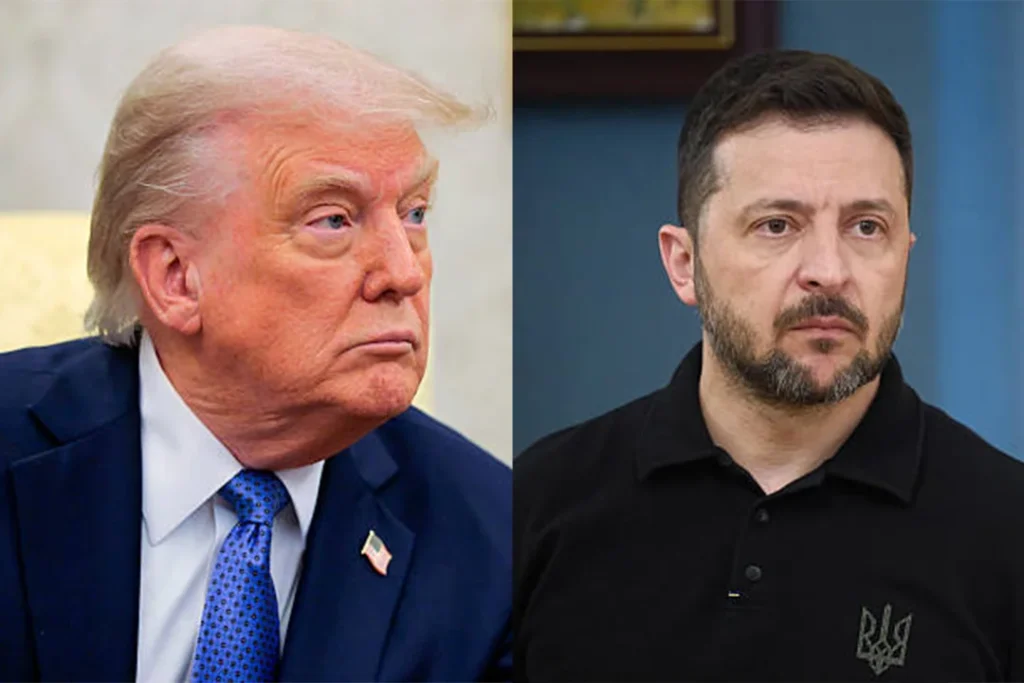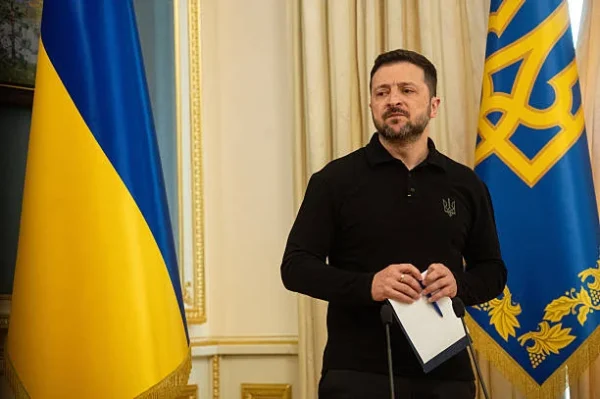
US and Ukraine sign vital mineral deal.
After months of rising tensions and fiery social media clashes, the U.S. and Ukraine have finally struck a major minerals deal.
This breakthrough agreement allows the United States to invest directly in Ukraine’s vast natural resources. It marks a turning point for Ukraine, a country still battling the fallout of Russia’s invasion.
Now, Ukraine can begin tapping into its rich mineral and energy reserves. This deal is a big step forward in rebuilding its economy—and reclaiming global relevance.
The United States and Ukraine have launched the Reconstruction Investment Fund. This joint venture will profit from the mining and sale of Ukraine’s mineral wealth, bringing financial benefits to both countries.
This move highlights a growing recognition of Ukraine’s untapped natural resources, which are becoming central to global politics and economic planning.
Interestingly, the deal follows months after former President Donald Trump warned President Zelensky about the risks of delaying negotiations—saying he was “gambling with World War Three.”
The agreement shows how once-overlooked resources now influence major decisions on global power, economic stability, and strategies for lasting peace. The world is watching closely as Ukraine aims to rebuild and reshape its future using its rich underground assets.
In 2024, Florida’s top tourist spots prove that natural beauty attracts global attention. Similarly, Ukraine’s vast mineral reserves are drawing eyes from around the world, proving that natural resources play a key role in geopolitics.
Why This Deal Matters
This new U.S.-Ukraine minerals deal gives Washington a powerful reason to keep funding Ukraine’s defense and rebuilding efforts. It comes as lawmakers in D.C. question the long-term value of ongoing support, especially since Russia’s full-scale invasion began in February 2022.
Ukraine holds about 5% of the world’s critical minerals, including lithium, graphite, and titanium. These resources power the modern world—from electric vehicle batteries and military tech to renewable energy infrastructure like wind farms.
Yet, much of this mineral wealth remains untapped. During Russia’s assault, Ukraine realized that global sympathy alone wouldn’t rebuild the nation. What it needed—and now has—is real investment.
This partnership not only strengthens Ukraine’s economy but also supports the global push for sustainable energy and strategic military readiness.
Ukraine’s Economic Recovery Gains Momentum
Support is finally arriving. With fresh U.S. investments in Ukraine, the nation can begin unlocking its full potential. These funds won’t just fuel its economy—they’ll also help Ukraine secure its future and integrate into global supply chains.
This cooperation marks a big win. It allows Ukraine to rebuild, strengthen its defenses, and move closer to long-term economic stability. It’s a breakthrough that benefits both Ukraine and its allies, laying the groundwork for shared growth and peace.
Dealmakers Step Forward
U.S. Treasury Secretary Scott Bessent called the new deal a “historic economic partnership.” He praised it as a major turning point for Ukraine’s future. According to Bessent, this agreement sends a clear signal: the Trump administration is committed to securing peace and prosperity in a free Ukraine.
“This historic signing is the result of President Trump’s relentless push for lasting peace,” Bessent said in a video statement. He emphasized that no group or entity supporting Russia’s military would be allowed to profit from Ukraine’s recovery.
Ukraine’s First Deputy Prime Minister, Yulia Svyrydenko, confirmed the deal on social media. She revealed that the partnership would operate on a 50:50 basis. Most importantly, it places no new debt on Ukraine.
Ukraine Keeps Control as U.S. Partnership Expands
Svyrydenko assured Kyiv that Ukraine would retain full ownership of the resources developed through the new U.S. partnership. Kyiv will have total control over extraction decisions, keeping its sovereignty intact. She also confirmed, “The fund’s income and contributions will not be taxed by either country.” This tax-free structure adds another layer of benefit to the historic U.S.-Ukraine investment deal.
But this alliance goes far beyond minerals. It includes joint ventures in oil and gas, using modern technology and encouraging Western investment in Ukraine. In exchange, the U.S. plans to send more military support, including critical air defense systems.
This is more than a deal—it’s a strategic alliance for peace and development. Both nations see it as a long-term path toward a stronger, more resilient Ukraine. However, the Ukrainian parliament must still approve the fund. Its ratification could mark a turning point in Ukraine’s effort to rebuild its war-torn economy.
A Clear Message to Russia
Though the Kremlin has stayed silent, the deal’s wording speaks volumes. It bluntly references “Russia’s full-scale invasion” and makes one thing clear: anyone who funded or armed Russia’s military will be cut off from future reconstruction profits.
This isn’t just economic policy—it’s a powerful statement. The partnership aims to restore Ukraine while isolating those who backed Russian aggression.
No Strings Attached: Ukraine Secures Fair Deal with U.S.
Ukrainian MP Lisa Yasko called the agreement a “fair deal.” She made it clear—Ukraine won’t owe debt to the United States. Instead of burdening the country with loans, Washington chose to invest in Ukraine’s recovery. Yasko emphasized this is true partnership, not a financial trap.
This distinction matters. Ongoing war has displaced millions and left Ukraine with a staggering $350 billion in damages. Calling it an investment, not a loan, builds trust and signals a shared commitment to Ukraine’s future. It also sends a strong message: the world stands united against aggression.
A Deal Nearly Derailed
Not long ago, this agreement hung by a thread. A tense exchange between Zelensky and Trump at the White House in February raised doubts.
However, diplomacy found a second wind. The two leaders reconnected during Pope Francis’s funeral, where calmer talks reopened the door to progress. That moment laid the foundation for the historic U.S.-Ukraine reconstruction agreement.
U.S. and Ukraine Join Forces for Economic Revival
The U.S. Treasury announced a bold move:
“This economic partnership allows our two nations to collaborate and invest together, ensuring that our combined resources and skills can boost Ukraine’s economic recovery.”
With this new U.S.-Ukraine partnership, both countries are working to build a more secure and stable future together.
“This economic partnership allows our two nations to collaborate and invest together, ensuring that our combined resources and skills can boost Ukraine’s economic recovery.”
With this new U.S.-Ukraine partnership, both countries are working to build a more secure and stable future together.
Ukraine’s Untapped Mineral Treasure
Ukraine sits on a treasure trove of critical minerals. According to the Ukrainian Geological Survey, the country holds 19 million tons of confirmed graphite deposits, making it one of the world’s top five sources. It also supplies 7% of Europe’s titanium and has one-third of the continent’s lithium reserves—essential for battery production in electric vehicles.
Beyond that, Ukraine contains large amounts of rare earth elements, uranium, cobalt, and beryllium, which power everything from military tech to renewable energy. Nickel, silver, zinc, manganese, and copper are also found in high quantities beneath Ukraine’s soil.
Beyond that, Ukraine contains large amounts of rare earth elements, uranium, cobalt, and beryllium, which power everything from military tech to renewable energy. Nickel, silver, zinc, manganese, and copper are also found in high quantities beneath Ukraine’s soil.
But There’s a Major Roadblock
Most of these valuable minerals lie in territories now occupied by Russia. Deputy Prime Minister Svyrydenko estimates that Russian-controlled regions hold about $350 billion worth of Ukraine’s natural resources. Research from Canadian firm SecDev confirms that includes half of Ukraine’s rare earth deposits and nearly two-thirds of its coal mines.
What’s the U.S. Really After?
The truth is simple: China currently controls 75% of the world’s rare earth supply. With Beijing limiting shipments to the U.S., Washington urgently needs alternative sources. Ukraine’s massive mineral reserves offer a strategic solution.
This partnership doesn’t just fuel Ukraine’s recovery—it could reshape global supply chains and reduce America’s reliance on Chinese exports.
This partnership doesn’t just fuel Ukraine’s recovery—it could reshape global supply chains and reduce America’s reliance on Chinese exports.
How Ukraine’s Stolen Resources Fuel Global Consequences
Dr. Robert Muggah and his team at SecDev have made it clear: Ukraine’s stolen mineral wealth directly fuels Russia’s military operations. By seizing these valuable resources, Moscow not only blocks Ukraine’s financial recovery but also strengthens its own war machine. This exploitation disrupts global supply chains and shifts the balance of resource control across the world.
Why the Stakes Are Global
This isn’t just about Ukraine’s economy. The consequences stretch far beyond its borders. As nations push for clean energy, defense advancements, and tech development, the demand for rare earth minerals skyrockets. Ukraine’s untapped supply of titanium, lithium, and graphite could help meet global needs—if properly developed.
Ukraine’s Untapped Goldmine
Currently, Ukraine only uses about 15% of its 20,000 known mineral sites. Years of war, outdated infrastructure, and lack of investment have stalled development. But experts say change is coming.
Iryna Suprun, a key figure in Ukraine’s mining industry, is optimistic.
“We will get the technologies our mining sector requires,” she said. “With new capital, we’ll increase tax revenue, create jobs, and unlock our full mineral potential.”
The Road Ahead
If Ukraine secures the right funding and infrastructure, it could transform into a global mineral powerhouse. This could strengthen its economy, create thousands of jobs, and shift the global supply chain away from dependence on countries like China and Russia.










